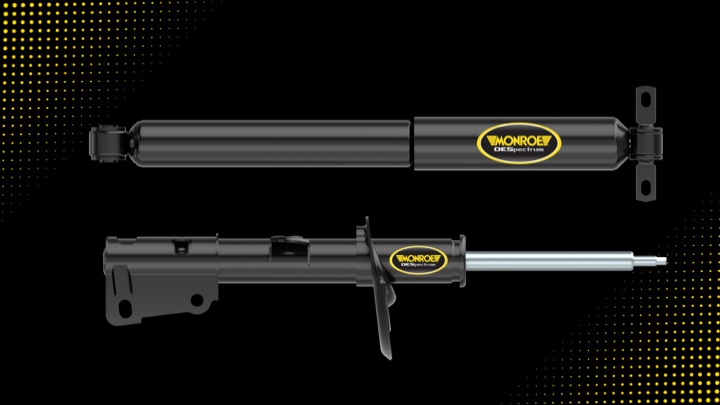Shocks 101
Consequences of Driving with Worn Shocks & Struts
Improving Safety With Shocks & Struts
An integral part of your suspension system, properly working shocks and struts are key to safe operation of your vehicle. Designed to deliver a smooth ride and ensure that your steering, stopping and stability aren’t compromised, shocks and struts also work to prevent suspension parts and tires from wearing out prematurely. If your shocks and struts are worn, you could experience challenging vehicle control under adverse conditions or accelerated driver fatigue due to increased number of steering inputs required. Read on to learn what can happen to your vehicle if you’re driving with worn shocks.
What Happens if You Don’t Replace Shocks & Struts

Like many parts on your vehicle, shocks and struts wear out over time. Once the wear starts hampering your vehicle’s performance, your service provider will likely recommend replacing the worn part to restore your car’s ride and handling. If you choose to wait to inspect worn shocks and struts, you jeopardize your ability to stop, steer and maintain stability. There are a variety of consequences when driving with worn shocks or struts that range from annoying to safety critical:
- Reduced braking efficiency – Worn shocks and struts can have an adverse effect on the performance of your brakes. Your vehicle’s stopping distance may increase, which can be critical in an emergency braking situation. You’re also at increased risk of skidding on wet roads. To avoid risking your safety and the safety of others on the road, don’t wait to have your worn shocks or struts inspected.
- Tire wear – You may think that the tread wear on tires is normal, but it could be the result of worn shocks and struts. Take a close look at your tires; if they show signs of cupping or accelerated wear your shocks or struts may have reduced ability to help maintain tire-to-road contact. This can become a safety issue, especially on wet roads, with the increased risk of hydroplaning. Don’t just replace the tire with excessively worn tread; that is just fixing the symptom rather than taking care of the problem. Have your service provider inspect your steering and suspension system, including shocks and struts for the source of the issue.
- Loss of handling and control – Driving with failing shocks or struts has a direct impact on your ability to control your vehicle. You may notice that your vehicle bounces excessively, rolls or sways abruptly when making a turn, or that you feel out of control when hit by a cross wind. Over time, shocks and struts can lose their ability to control weight transfer; this is what causes you to feel like you’re not in control of your vehicle. This can be dangerous, especially if your tires lose contact with the pavement, making it difficult to control your vehicle in an emergency situation.
- Increased wear on other suspension parts – Worn shocks and struts can have a negative effect on related steering, braking, and suspension components. As the shocks or struts wear, they allow more suspension movement, meaning that other steering, braking and suspension components can suffer the same effects. This additional wear and tear can cause these related parts to wear out quicker. This can also add up to additional repair expenses.
Time to Make an Appointment
If you think your vehicle has worn shocks or struts, it’s time to make an appointment with your service provider for a Safety Triangle™ Inspection. After a thorough inspection, they’ll be able to find the source of the problem and make the proper repairs.
Learn more about quality shocks, struts, and strut assemblies, find the right car part, or find a local repair shop today.
The content in this article is for informational purposes only. You should consult with a certified technician or mechanic if you have questions relating to any of the topics covered herein. Tenneco will not be liable for any loss or damage caused by your reliance on any content.